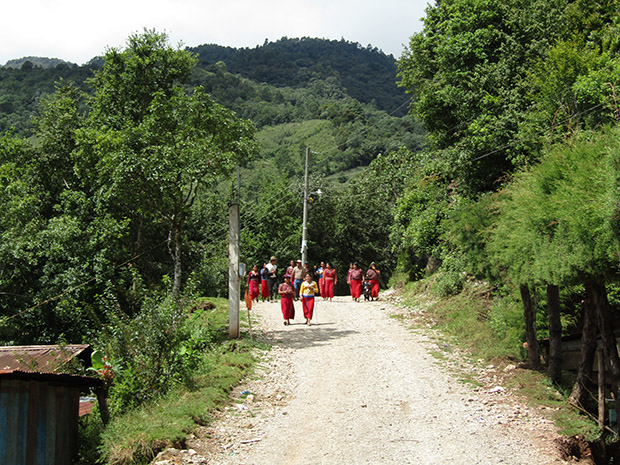Nebaj is a municipality in Guatemala’s Quiché department that is home to many indigenous Ixil people, a Maya indigenous group. The CWS-supported “Seeds of Hope” program focuses on the communities of Pexlá Grande, Pulay, Turanza and Visaj Cup in Nebaj.

A massacre was committed at the end of this road in Pexlá Grande, at the base of the mountain. When I visited last month, I watched some of the women from the Seeds of Hope program walking down the same road. They still remember, but today they are full of dreams.
Like many rural communities in Guatemala, Nebaj was affected by the bloody internal armed conflict of the Guatemalan Civil War, which ended in 1996. The conflict lasted for decades and was characterized by a brutal military tactic of massacring Maya civilians to maintain a reign of terror. According to a report from the Archdiocese of Guatemala called Guatemala: Never Again, a total of 263 massacres were registered in the Quiché department during the war. Of those, 105 occurred in the Ixil Region, including 49 massacres in Nebaj.
The communities of Pexlá Grande and Pulay are among the communities that suffered massacres. And Turanza has a returned population—its residents fled to other parts of the country or went into exile during the conflict and later returned with the signing of the Peace Accords in 1996.
Last month, I made my first visit to Nebaj as the new CWS Regional Representative for Central America and Mexico. When I set foot in Pexlá Grande, I knew I was on the ground where horrific things happened. This was the site of an army massacre. The Ixil people remember, and that memory still hurts.
The Ixil community, though, is more than their history. It is a community that is dreaming and building. It has strengthened its local organizations and demanded compensation. This is why the program name – Seeds of Hope – fits so well. It is no longer just about planting vegetables, but about giving hope to the women who participate in the project and to build resilience. Some of them are sowing and reaping the fruits of their agricultural labor for the first time, growing food for consumption and selling another part in local markets, which generates additional income. Their orchards are flourishing with up to 70 species, and their greenhouses have up to 16. I saw tomato, onion, cucumber, cabbage, radish, chiles, chard, beets, potatoes and beans. There were herbs like cilantro and mint, and fruits including apple, pear, passionfruit, lemons and limes. They told me how they are taking advantage of this produce in their diet and combining it with what they have learned about hygiene and food preparation as they care for their children.
I felt the pride and joy radiating from them as they told me about their work. Catarina Rivera Matom and Elena Matom de Turanza put it this way: “This work we do gives us hope that everything will be better. That’s why we are happy.”
Our nation of Guatemala still faces challenges and adversity, but the hope that these women have is infectious. I’m eager to get back to Nebaj soon to see the program continue and to see these women achieve their dreams.
Erwin Garzona is the CWS Regional Representative for Central America and Mexico.
Thank you to CROP Hunger Walkers and Growing Hope Globally for making this program possible, and to CIEDEG, our partner on the ground in Guatemala.

